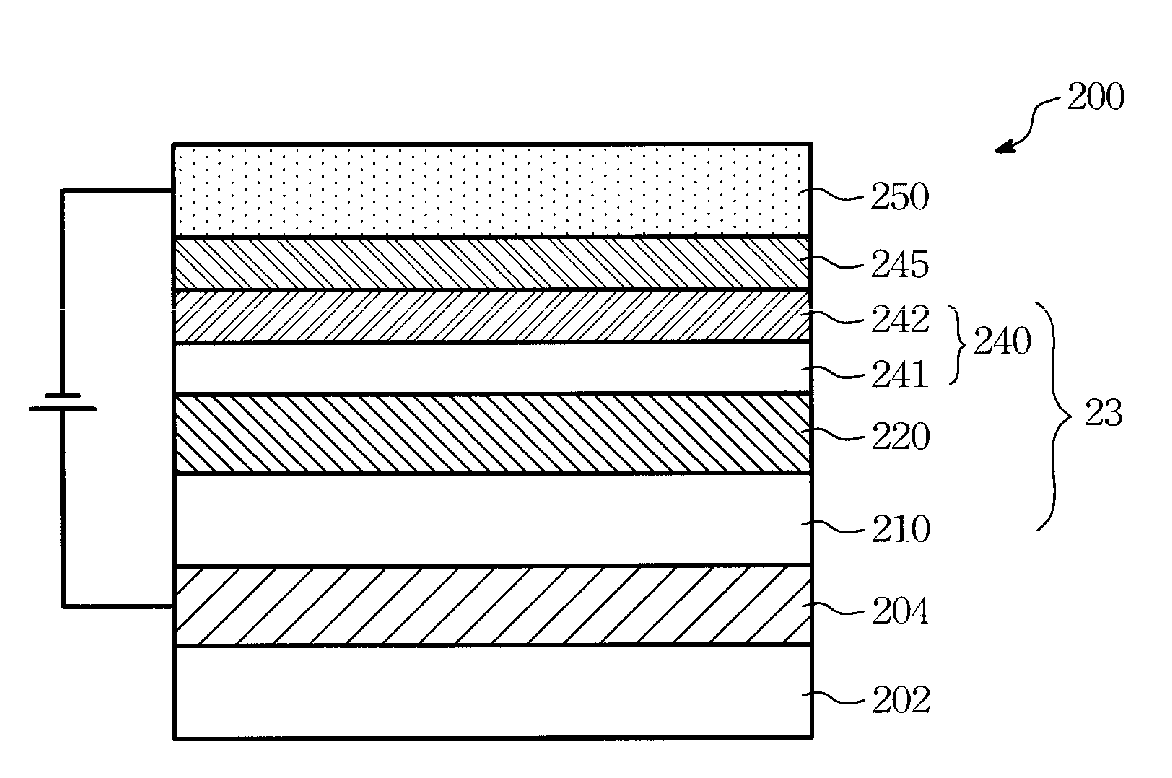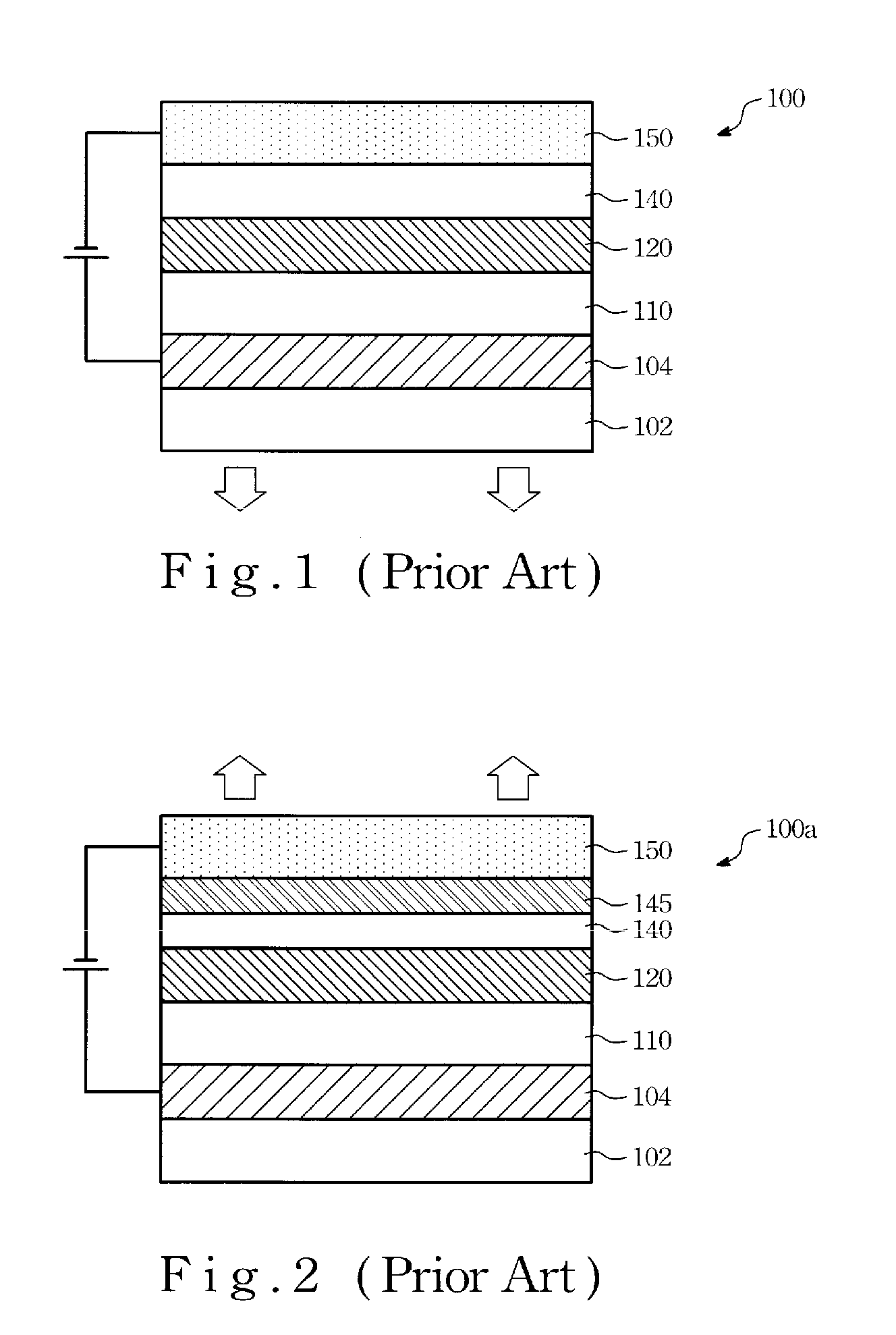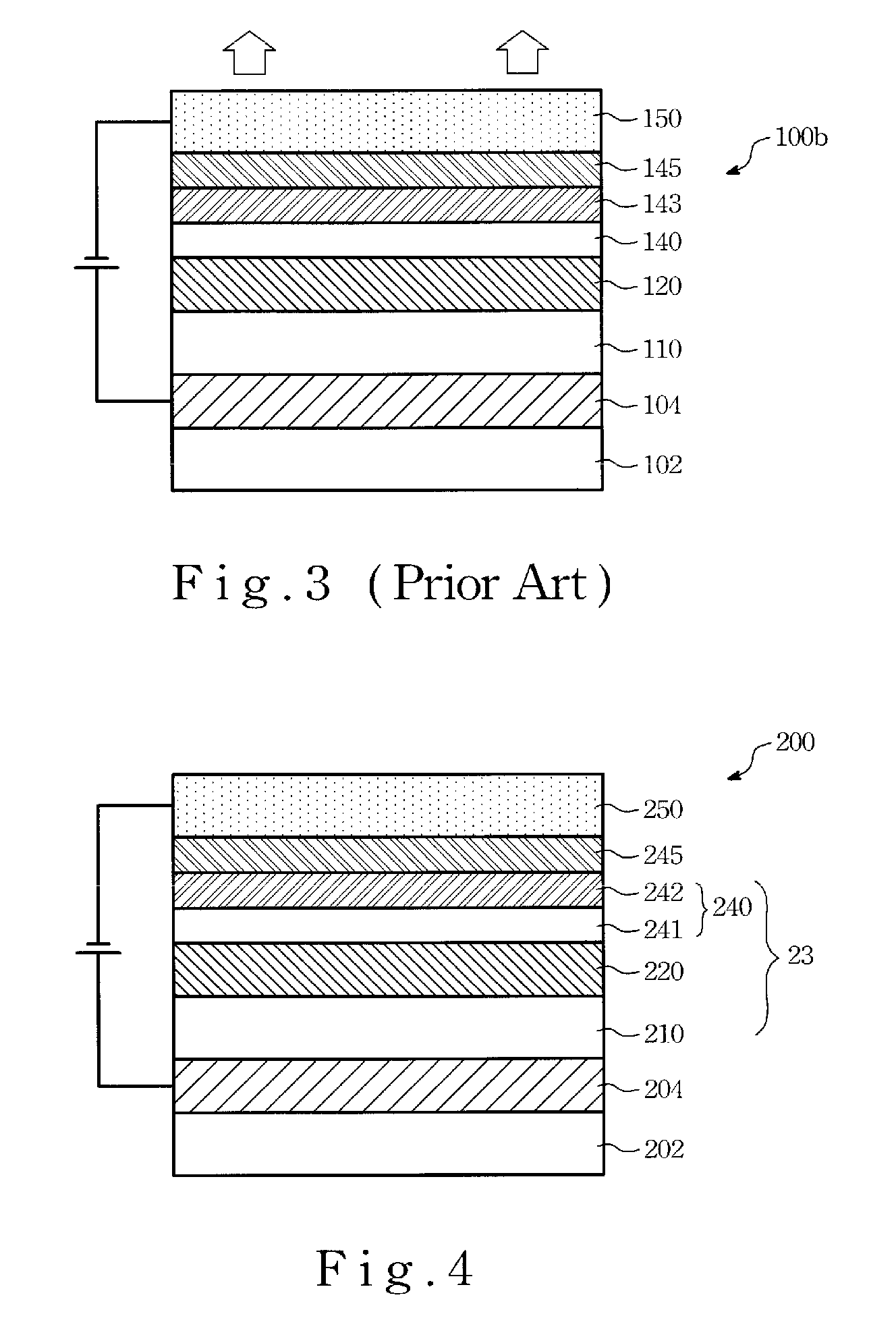Organic Electro-Luminescence Device
a technology of electroluminescence device and organic material, which is applied in the direction of discharge tube/lamp details, discharge tube luminescnet screen, organic semiconductor device, etc., can solve the problems of poor electron injection efficiency of organic electroluminescence device, sputtering process of ito material, and affecting the efficiency of light utilization, etc., to achieve high electron injection efficiency
- Summary
- Abstract
- Description
- Claims
- Application Information
AI Technical Summary
Benefits of technology
Problems solved by technology
Method used
Image
Examples
Embodiment Construction
[0024]The invention aims at providing an organic electro-luminescence devices and particularly to a top-emission organic electro-luminescence device, which has high current injection efficiency, relatively loner life time, and can be fabricated with relatively simplified processes.
[0025]Please refer to FIG. 4, which is a cross section view of an organic electro-luminescence device of the present invention. While fabricating the organic electro-luminescence device 200, a substrate 202 is provided first, then a hole injection layer 204 is disposed on the substrate 202. In one embodiment, the substrate 202 is made of light transparent materials or opaque materials with light reflection character. The hole injection layer 204 is made of conductive transparent materials (for instance, ITO, IZO) via sputtering process.
[0026]Next, an organic layer 23 is disposed on the hole injection layer 204. Wherein the organic layer 23 is an multi-layer structure. It at least comprises a light-emitting...
PUM
| Property | Measurement | Unit |
|---|---|---|
| brightness | aaaaa | aaaaa |
| life time | aaaaa | aaaaa |
| organic | aaaaa | aaaaa |
Abstract
Description
Claims
Application Information
 Login to View More
Login to View More - R&D
- Intellectual Property
- Life Sciences
- Materials
- Tech Scout
- Unparalleled Data Quality
- Higher Quality Content
- 60% Fewer Hallucinations
Browse by: Latest US Patents, China's latest patents, Technical Efficacy Thesaurus, Application Domain, Technology Topic, Popular Technical Reports.
© 2025 PatSnap. All rights reserved.Legal|Privacy policy|Modern Slavery Act Transparency Statement|Sitemap|About US| Contact US: help@patsnap.com



